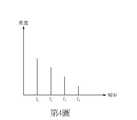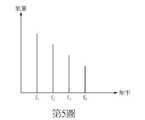TWI715336B - Laptop computer capable of detecting lid status and related method - Google Patents
Laptop computer capable of detecting lid status and related methodDownload PDFInfo
- Publication number
- TWI715336B TWI715336BTW108144594ATW108144594ATWI715336BTW I715336 BTWI715336 BTW I715336BTW 108144594 ATW108144594 ATW 108144594ATW 108144594 ATW108144594 ATW 108144594ATW I715336 BTWI715336 BTW I715336B
- Authority
- TW
- Taiwan
- Prior art keywords
- housing
- notebook computer
- mode
- heat sink
- noise frequencies
- Prior art date
Links
- 238000000034methodMethods0.000titleclaimsdescription13
- 238000012545processingMethods0.000claimsabstractdescription28
- 230000017525heat dissipationEffects0.000claimsabstractdescription16
- 230000007958sleepEffects0.000claimsdescription6
- 230000006266hibernationEffects0.000claimsdescription2
- 230000005236sound signalEffects0.000abstract2
- 238000010586diagramMethods0.000description8
- 238000001816coolingMethods0.000description1
- 238000013461designMethods0.000description1
- 238000005265energy consumptionMethods0.000description1
- 238000005516engineering processMethods0.000description1
- 238000012986modificationMethods0.000description1
- 230000004048modificationEffects0.000description1
- 238000012544monitoring processMethods0.000description1
- 238000013021overheatingMethods0.000description1
Images
Landscapes
- Power Sources (AREA)
Abstract
Description
Translated fromChinese本發明相關於一種可判斷開闔狀態之筆記型電腦及相關方法,尤指一種可依據散熱裝置的噪音來判斷開闔狀態之筆記型電腦及相關方法。The present invention relates to a notebook computer and related method capable of judging the open and closed state, and in particular to a notebook computer and related method capable of judging the open and closed state based on the noise of the heat sink.
筆記型電腦的結構分成上殼體和下殼體兩個部分,上殼體用來設置螢幕和視訊鏡頭,而下殼體用來設置鍵盤、觸控板和運作所需的各種內部元件。上殼體和下殼體透過轉軸(hinge)彼此樞接,為了讓使用者能夠輕鬆地開閤筆記型電腦,轉軸通常設計在剛打開或剛關上時(轉軸角度約0~5度)阻力最小,而在轉軸角度超過約10度以後扭矩大增,使得上殼體和下殼體能夠保持在一個適合操作的角度。The structure of the notebook computer is divided into two parts, an upper casing and a lower casing. The upper casing is used for setting a screen and a video lens, and the lower casing is used for setting a keyboard, a touch panel, and various internal components required for operation. The upper shell and the lower shell are pivotally connected to each other through a hinge. In order to allow users to easily open and close the notebook, the hinge is usually designed to have the least resistance when it is just opened or closed (the angle of the hinge is about 0~5 degrees) , And the torque increases greatly after the angle of the rotating shaft exceeds about 10 degrees, so that the upper housing and the lower housing can be maintained at an angle suitable for operation.
使用者常希望在闔上筆記型電腦後,筆記型電腦可以自動進入休眠模式。先前技術之筆記型電腦多半使用外加感測器去確認轉軸角度以判斷上殼體和下殼體是否闔上,進而控制筆記型電腦進入休眠模式。然而,外加感測器會增加筆記型電腦的硬體成本。Users often hope that after closing the laptop, the laptop can automatically enter the sleep mode. Most of the prior art notebook computers use an additional sensor to confirm the angle of the rotating shaft to determine whether the upper casing and the lower casing are closed, and then control the notebook computer to enter a sleep mode. However, the addition of sensors will increase the hardware cost of the notebook computer.
本發明提供一種筆記型電腦,其包含一第一殼體,一第二殼體,用來樞接該第一殼體和該第二殼體之一轉軸,設置在該第一殼體之一散熱裝置,設置在該第二殼體之一收音裝置以用來在該散熱裝置運作時量測一聲波訊號,以及一處理裝置。該處理裝置用來依據該散熱裝置之運作量計算出相對應之一個或多個噪音頻率,求出該聲波訊號中相關於該一個或多個噪音頻率之一聲音能量狀態,以及依據該聲音能量狀態來判斷該第一殼體和該第二殼體之間的一轉軸角度。The present invention provides a notebook computer, which comprises a first casing and a second casing for pivotally connecting a shaft of the first casing and the second casing, and is arranged on one of the first casings The heat dissipating device is arranged in a radio device of the second housing for measuring a sound wave signal when the heat dissipating device is in operation, and a processing device. The processing device is used to calculate the corresponding one or more noise frequencies according to the operation amount of the heat sink, obtain a sound energy state in the sound wave signal related to the one or more noise frequencies, and according to the sound energy State to determine a rotation axis angle between the first housing and the second housing.
本發明另提供一種判斷一筆記型電腦開闔狀態之方法,該筆記型電腦包含一第一殼體、一第二殼體、一散熱裝置、一收音裝置,以及用來樞接該第一殼體和該第二殼體之一轉軸。該方法包含該收音裝置在該散熱裝置運作時量測一聲波訊號,其中該散熱裝置設置在該第一殼體,而該收音裝置設置在該第二殼體,依據該散熱裝置之運作量計算出相對應之一個或多個噪音頻率,求出該聲波訊號中相關於該一個或多個噪音頻率之一聲音能量狀態,以及依據該聲音能量狀態來判斷該第一殼體和該第二殼體之間的一轉軸角度。The present invention also provides a method for judging the open and closed state of a notebook computer. The notebook computer includes a first casing, a second casing, a heat sink, a radio device, and a first casing for pivoting Body and a shaft of the second housing. The method includes the radio device measuring a sound wave signal when the heat dissipation device is operating, wherein the heat dissipation device is disposed on the first housing, and the radio device is disposed on the second housing, and the calculation is based on the operation amount of the heat dissipation device Find out the corresponding one or more noise frequencies, obtain a sound energy state in the sound wave signal related to the one or more noise frequencies, and determine the first shell and the second shell according to the sound energy state A rotation axis angle between the bodies.
第1圖為本發明實施例中一種筆記型電腦100之外觀示意圖。如第1圖所示,筆記型電腦100包含一上殼體110、一下殼體120、一轉軸130、一螢幕10、一鍵盤20,和一觸控板30。螢幕10可設置在筆記型電腦100之上殼體110,鍵盤20和觸控板30可設置在筆記型電腦100之下殼體120,而筆記型電腦運作所需的元件可設置在上殼體110或下殼體120的內部,因此未顯示於第1圖。上殼體110和下殼體120可透過轉軸130彼此樞接,使用者可視其需求打開或闔上筆記型電腦100,其中θ代表上殼體110和下殼體120之間的轉軸角度。FIG. 1 is a schematic diagram of the appearance of a
第2圖為本發明實施例中筆記型電腦100內部元件之功能方塊圖。為了簡化說明,第2圖僅顯示相關於本發明之元件,其中筆記型電腦100另包含一收音裝置40、一散熱裝置50,以及一處理裝置60。散熱裝置50和處理裝置60可設置在筆記型電腦100之下殼體120內部。收音裝置40可設置在筆記型電腦100之上殼體110內部,因此第1圖所示上殼體110之外觀只看得到收音裝置40之收音孔5。在第1圖所示之實施例中,收音孔5位於螢幕10的正上方,然而收音孔5在上殼體110上的位置並不限定本發明之範疇。FIG. 2 is a functional block diagram of the internal components of the
第3圖為本發明實施例中筆記型電腦100判斷開闔狀態之流程圖。第3圖所示之流程圖包含下列步驟:FIG. 3 is a flowchart of the
步驟310: 處理裝置40確認散熱裝置50之運作量,並依此計算出相對應之噪音頻率。Step 310: The
步驟320: 收音裝置40在散熱裝置50運作時量測聲波訊號。Step 320: The
步驟330: 處理裝置40求出聲波訊號中相關於噪音頻率之聲音能量狀態。Step 330: The
步驟340: 處理裝置40依據聲音能量狀態來判斷筆記型電腦100之轉軸角度。Step 340: The
步驟350:處理裝置40依據筆記型電腦100之轉軸角度來決定筆記型電腦100之運作模式。Step 350: The
在本發明實施例中,散熱裝置50可為一風扇。筆記型電腦100之基本輸入輸出系統(BIOS)中會內建溫度監控與散熱裝置50的轉速設定,以依據內部主機板、顯示卡及/或中央處理器(CPU)的溫度變化來動態地調整風扇的轉速,進而使筆記型電腦100能在安全不過熱的情況下正常運作。In the embodiment of the present invention, the
在步驟310中,處理裝置40可確認BIOS中的風扇轉速設定,並依據目前風扇轉速設定來計算出相關散熱裝置50運作量的一個或多個噪音頻率。更詳細地說,處理裝置40可將目前風扇轉速乘上風扇葉片數後再除以60,即可求出散熱裝置50運作時所發出聲波訊號的基頻頻率f1,接著再求出相對應的n倍頻頻率fn,其中fn=n*f1且n為大於1的整數。In
在本發明實施例中,收音裝置40可為一內建麥克風。當散熱裝置50運作時,扇片的轉動會造成空氣的擠壓,而氣壓的變動會被轉換為包含一連串的震動(vibrations)之聲波訊號,在透過空氣傳遞後在步驟320中可由收音裝置40加以量測。In the embodiment of the present invention, the
在步驟330中,處理裝置40可求出聲波訊號中相關於一個或多個噪音頻率之聲音能量狀態。在一實施例中,處理裝置40可使用快速傅立葉轉換(Fast Fourier Transform, FFT)技術,將以時域(time domain)方式呈現之聲波訊號轉換成以頻域(frequency domain)方式來呈現,進而辨識出聲波訊號中相關散熱裝置50運作之每一噪音頻率成份。每一噪音頻率之能量值相關於風扇尺寸、扇葉設計、扇葉數量、風扇轉速,以及收音距離等。值得注意的是,處理裝置40求出聲音能量狀態之方式並不限定本發明之範疇。In
在步驟340中,處理裝置40可依據聲音能量狀態來判斷筆記型電腦100之轉軸角度θ。第4圖為筆記型電腦100在正常操作狀態下(轉軸角度θ約為45-60度)所得到的聲音能量狀態示意圖,而第5圖為筆記型電腦100闔上時(轉軸角度θ為0度)所得到的聲音能量狀態示意圖,其中橫軸代表噪音頻率值,而縱軸代表噪音頻率之能量值。為了說明目的,第4圖和第5圖顯示了n=4時的實施例。如前所述,針對從以特定轉速運作之同一散熱裝置50量測到的聲波訊號,收音裝置40和散熱裝置50之間的收音距離越短,聲音能量狀態中多數噪音頻率之能量值越大;收音裝置40和散熱裝置50之間的收音距離越大,聲音能量狀態中多數噪音頻率之能量值越小。In
在步驟350中,由於收音裝置40和散熱裝置50之間的收音距離是由轉軸角度θ來決定,而轉軸角度θ取決於使用者開闔筆記型電腦100的程度。當聲音能量狀態中一個或數個噪音頻率之能量值大於預定值時,代表收音裝置40和散熱裝置50彼此相當接近,處理裝置40即可判定此時筆記型電腦100已經被闔上,進而讓筆記型電腦100進入省電模式以降低能量消耗,例如進入待機模式、休眠模式、睡眠模式,或關機模式等。In
在本發明一實施例中,處理裝置40可依據聲波訊號的基頻頻率f1能量值來判定轉軸角度θ之大小。在本發明另一實施例中,處理裝置40可依據聲波訊號的基頻頻率f1能量值和至少一倍頻頻率能量值來判定轉軸角度θ之大小。In an embodiment of the present invention, the
在本發明一實施例中,處理裝置40可整合至筆記型電腦100之CPU。在本發明另一實施例中,處理裝置40可實作成一獨立元件。然而,處理裝置40之實作方式並不限定本發明之範疇。In an embodiment of the present invention, the
綜上所述,本發明筆記型電腦100利用位於上殼體110之收音裝置40和位於下殼體120之散熱裝置50來偵測轉軸130的角度,因此不需要額外使用外加感測器就能判斷上殼體110和下殼體120是否闔上,以在筆記型電腦100被闔上時自動進入省電模式。 以上所述僅為本發明之較佳實施例,凡依本發明申請專利範圍所做之均等變化與修飾,皆應屬本發明之涵蓋範圍。In summary, the
5:收音孔 10:螢幕 20:鍵盤 30:觸控板 40:收音裝置 50:散熱裝置 60:處理裝置 100:筆記型電腦 110:上殼體 120:下殼體 130:轉軸 310~350:步驟 θ:轉軸角度5: Radio hole 10: screen 20: keyboard 30: Touchpad 40: Radio device 50: heat sink 60: processing device 100: laptop 110: Upper shell 120: lower shell 130:
第1圖為本發明實施例中一種筆記型電腦之外觀示意圖。 第2圖為本發明實施例中筆記型電腦內部元件之功能方塊圖。 第3圖為本發明實施例中筆記型電腦判斷開闔狀態之流程圖。 第4圖為本發明實施例中筆記型電腦在正常操作狀態下所得到的聲音能量狀態示意圖。 第5圖為本發明實施例中筆記型電腦闔上時所得到的聲音能量狀態示意圖。FIG. 1 is a schematic diagram of the appearance of a notebook computer in an embodiment of the present invention. Figure 2 is a functional block diagram of the internal components of the notebook computer in the embodiment of the present invention. Figure 3 is a flow chart of the notebook computer judging the open and closed state in the embodiment of the present invention. FIG. 4 is a schematic diagram of the sound energy state obtained by the notebook computer in the normal operation state in the embodiment of the present invention. Figure 5 is a schematic diagram of the sound energy state obtained when the notebook computer is closed in the embodiment of the present invention.
310~350:步驟310~350: Step
Claims (10)
Translated fromChinesePriority Applications (1)
| Application Number | Priority Date | Filing Date | Title |
|---|---|---|---|
| TW108144594ATWI715336B (en) | 2019-12-06 | 2019-12-06 | Laptop computer capable of detecting lid status and related method |
Applications Claiming Priority (1)
| Application Number | Priority Date | Filing Date | Title |
|---|---|---|---|
| TW108144594ATWI715336B (en) | 2019-12-06 | 2019-12-06 | Laptop computer capable of detecting lid status and related method |
Publications (2)
| Publication Number | Publication Date |
|---|---|
| TWI715336Btrue TWI715336B (en) | 2021-01-01 |
| TW202122966A TW202122966A (en) | 2021-06-16 |
Family
ID=75237317
Family Applications (1)
| Application Number | Title | Priority Date | Filing Date |
|---|---|---|---|
| TW108144594ATWI715336B (en) | 2019-12-06 | 2019-12-06 | Laptop computer capable of detecting lid status and related method |
Country Status (1)
| Country | Link |
|---|---|
| TW (1) | TWI715336B (en) |
Citations (5)
| Publication number | Priority date | Publication date | Assignee | Title |
|---|---|---|---|---|
| TWM288490U (en)* | 2005-07-11 | 2006-03-01 | Inventec Corp | Structure of rotation shaft for notebook computer |
| TW201337511A (en)* | 2011-12-02 | 2013-09-16 | Intel Corp | Techniques for notebook hinge sensors |
| CN108415513A (en)* | 2018-04-16 | 2018-08-17 | 陈慧颖 | The method and laptop of the maximum open angle of early warning laptop |
| TW201931056A (en)* | 2018-01-04 | 2019-08-01 | 仁寶電腦工業股份有限公司 | Notebook computer |
| TW201931077A (en)* | 2017-12-29 | 2019-08-01 | 宏碁股份有限公司 | Laptop computer and gaze-coordinate calibration e method |
- 2019
- 2019-12-06TWTW108144594Apatent/TWI715336B/enactive
Patent Citations (5)
| Publication number | Priority date | Publication date | Assignee | Title |
|---|---|---|---|---|
| TWM288490U (en)* | 2005-07-11 | 2006-03-01 | Inventec Corp | Structure of rotation shaft for notebook computer |
| TW201337511A (en)* | 2011-12-02 | 2013-09-16 | Intel Corp | Techniques for notebook hinge sensors |
| TW201931077A (en)* | 2017-12-29 | 2019-08-01 | 宏碁股份有限公司 | Laptop computer and gaze-coordinate calibration e method |
| TW201931056A (en)* | 2018-01-04 | 2019-08-01 | 仁寶電腦工業股份有限公司 | Notebook computer |
| CN108415513A (en)* | 2018-04-16 | 2018-08-17 | 陈慧颖 | The method and laptop of the maximum open angle of early warning laptop |
Non-Patent Citations (1)
| Title |
|---|
| A;* |
Also Published As
| Publication number | Publication date |
|---|---|
| TW202122966A (en) | 2021-06-16 |
Similar Documents
| Publication | Publication Date | Title |
|---|---|---|
| US8009418B2 (en) | Information processing apparatus | |
| US9671839B2 (en) | Information handling system dynamic acoustical management | |
| CN102734194B (en) | control method of computer cooling fan | |
| US20090002939A1 (en) | Systems and methods for fan speed optimization | |
| JP4966292B2 (en) | Information processing apparatus and cooling performance determination method | |
| US8566621B2 (en) | Method for implementing thermal management in a processor and/or apparatus and/or system employing the same | |
| US20190008074A1 (en) | Fan speed control in electronic devices | |
| CN104131989A (en) | Electronic device and fan control method thereof | |
| US9471117B1 (en) | Skin temperature of computing device enclosure | |
| US11675402B2 (en) | Maintaining a threshold operating temperature in an information handling system | |
| CN201898688U (en) | Electronic device | |
| TWI715336B (en) | Laptop computer capable of detecting lid status and related method | |
| US11545125B1 (en) | Electronic system with heat dissipation and feed-forward active noise control function and related method | |
| US11582882B2 (en) | Information processing apparatus and control method | |
| CN103092292A (en) | Portable computer and system efficiency adjusting method thereof | |
| JP6725576B2 (en) | Cooling system and electronic equipment | |
| US12035502B2 (en) | Codesigned air shroud | |
| US20120063606A1 (en) | Sound pressure prediction apparatus, sound pressure prediction method, and information storage medium | |
| US11836062B2 (en) | System and method of managing acoustics of information handling systems | |
| CN113266569B (en) | Noise-based fault detection method and system for compressor | |
| JP5500019B2 (en) | Prediction program, prediction device, and prediction method | |
| TWI817298B (en) | Electronic system and method of dynamically adjusting fan speed | |
| WO2023146509A1 (en) | Operation modes based on pressure differentials | |
| CN114185838A (en) | System-on-Chip and Method of Regulating Voltage and Frequency | |
| TWI592578B (en) | Fan controlling method of electronic device |




